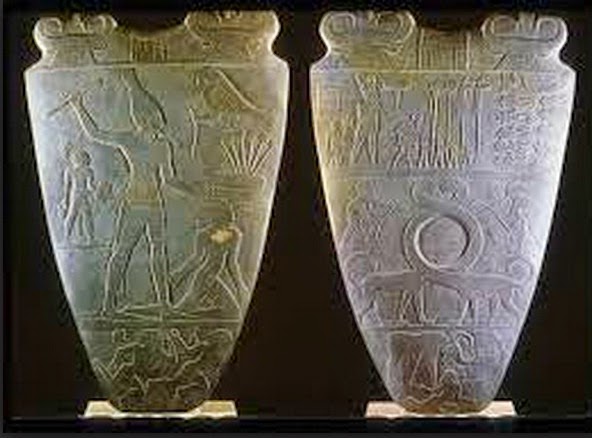The Narmer Palette, or Great Hierakonpolis Palette
The Narmer Palette, or Great Hierakonpolis Palette, is a significant Egyptian archeological find, dating from about 3200 BC, containing some of the earliest hieroglyphic inscriptions ever found, and depicting the unification of Upper and Lower Egypt under Narmer who is not mentioned by Manetho nor in the Turin King List or the Palermo stone.
The palette, which survived intact, was discovered by British archeologist James E. Quibell in 1898 while he was excavating royal residences in Nekhen, (present-day Hierakonpolis) which was the ancient, pre-dynastic capital of Upper Egypt.
Narmer-Palette It is a large (ca. 64 cm), shield-shaped, ceremonial palette, carved from a single piece of soft green slate. Both sides are decorated. At the top is a serekh with the symbols nar (catfish) and mr (chisel) inside, being the phonetic representation of Narmer's name. Pictures depict Narmer wearing the white crown of Upper Egypt and the red crown of Lower Egypt and vanquishing his enemies, thus symbolizing the unification of the "Two Lands".
The Narmer Palette resides in the Egyptian Museum in Cairo.











0 comments:
Post a Comment